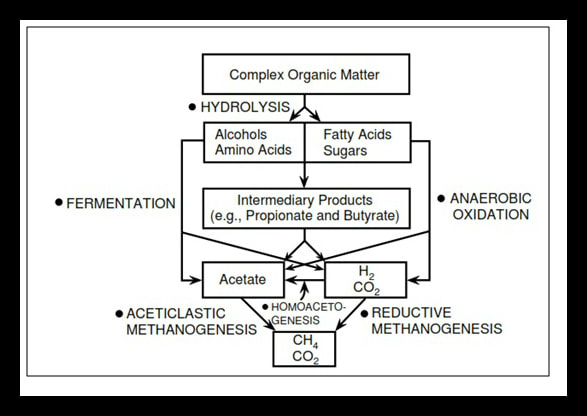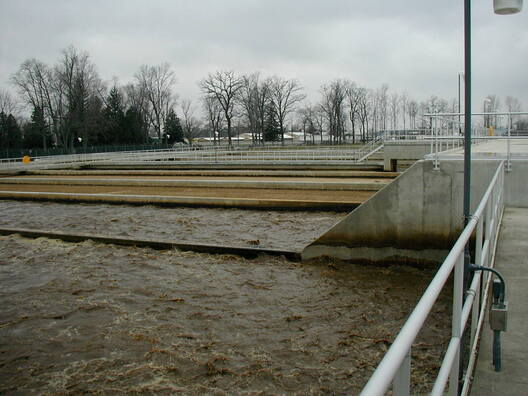- Hydrolyzing & Acidogenic bacteria are bacteria with anoxic and fermentative biological pathways. These organisms degrade complex organics into forms used by other anaerobic organisms. These microbes utilize any remaining alternative electron acceptors and eventually use organic compounds as the terminal electron acceptor. This stage can also product nuisance H2S gas
- Acetogenic bacteria are anaerobic cultures that continue the fermentation process and produce the acetate/acetic acids that are the preferred feedstock for developing methanogenic archaeal populations. In both the Hydrolyzing and Acetogenic processes, H2 and CO2 gases are produced.
- Methanogenic archaea - note this is a separate kingdom from bacteria with unique enzyme cofactor micronutrients - are obligate anaerobic cultures responsible for producing valuable methane gas (CH4). Two varieties of methanogens exist based on substrates utilized:
Acetic Acid Cleavage - CH3COOH --> CH4 + CO2
Carbon Dioxide Reduction - CO2 + 4H2 --> CH4 + 2H2O
- Methane and CO2 percentages in produced gas
- pH, Temperature, ORP
- Alkalinity
- Organic acids
- H2S
- Trace micronutrients used by methanogens that may not be present in the influent
Aster Bio uses Microbial Community Analysis (MCA) as a part of our Environmental Genomics testing suite. The MCA test is a full microbial census for both bacteria and archaeal populations using high throughput sequencing technology. The resulting census gives relative % of the genera present. For monitoring, this shows drifts and changes in populations in response any operational change. MCA also proves useful in discovering problem sources in digesters not achieving desired methane conversion. While not a daily test, routine monitoring with MCA supplements traditional monitoring and an help improve anaerobic digester performance while reducing operating costs.



 RSS Feed
RSS Feed